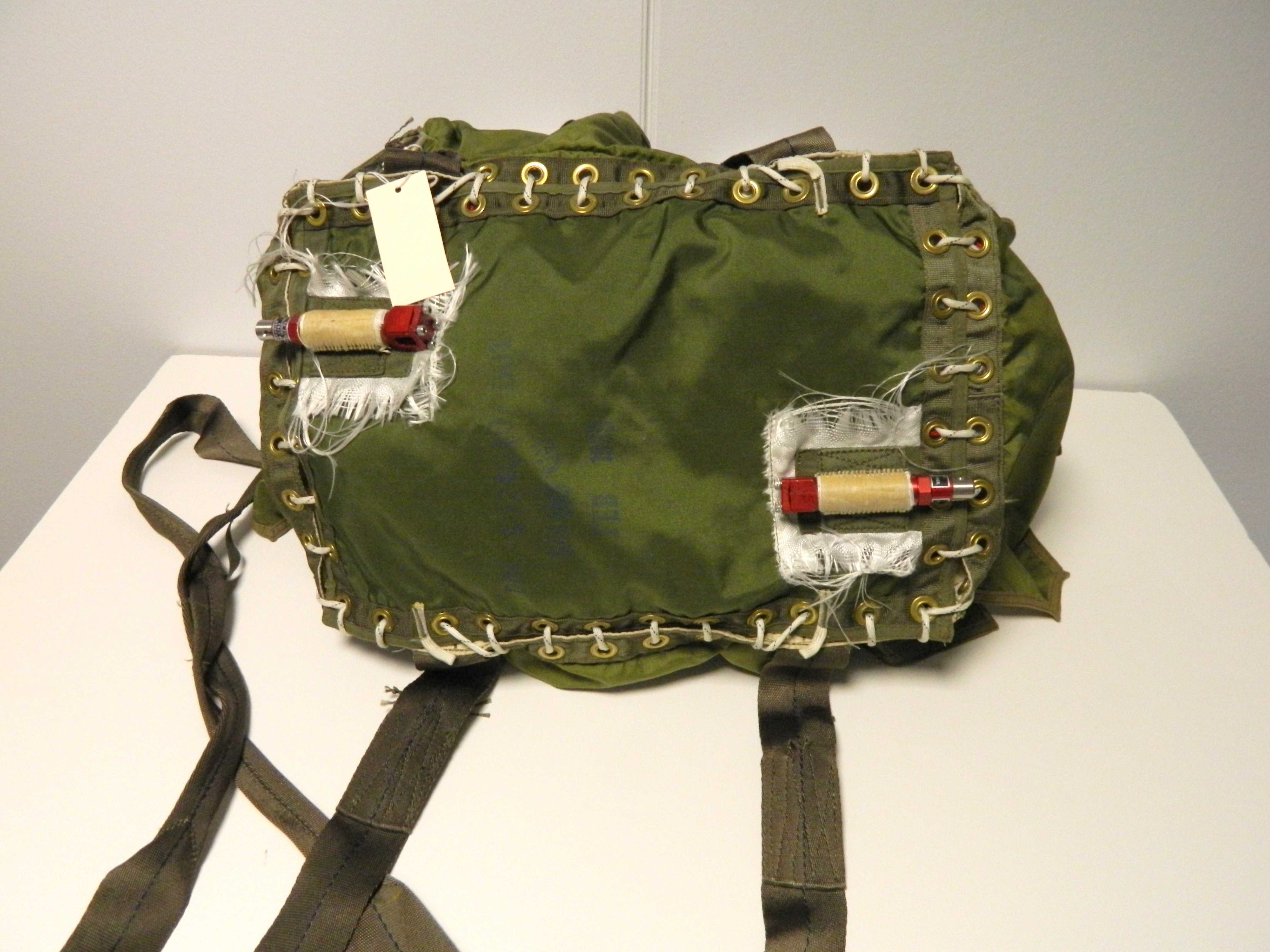Artifact Details

Pictured here is a parachute bag from CORONA, the US’ first successful photoreconnaissance satellite program. Development of CORONA began in the mid-1950s as an alternative to U-2 aircraft reconnaissance flights, but its first 12 missions failed. Finally, on August 18, 1960, the first successful CORONA satellite was launched. That one mission produced more imagery of the Soviet Union than all previous U-2 missions over that area combined. Its success came at a critical time. On May 1, 1960 the Soviet Union shot down a U-2 piloted by Gary Powers, dramatically increasing the need for another way to collect intelligence from the Soviet Union and other areas.
The CORONA program continued until 1972 and revolutionized the collection of intelligence data. During CORONA’s lifetime, its satellites photographed 750,000,000 square nautical miles of the earth’s surface as well as all of the Soviet Union’s intercontinental ballistic missile complexes, providing information crucial to the analysis of Soviet nuclear weaponry.
